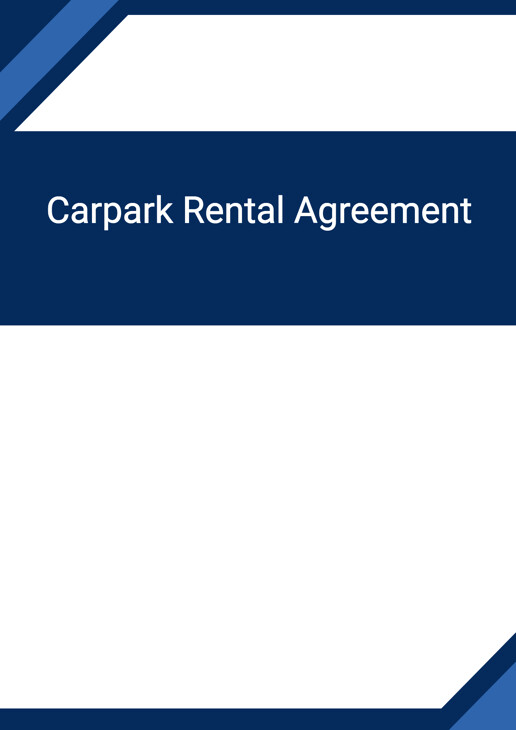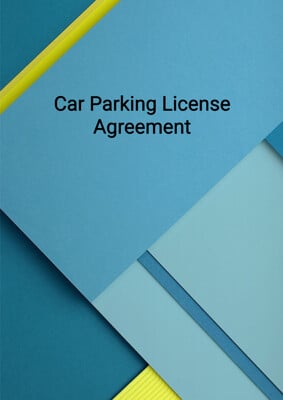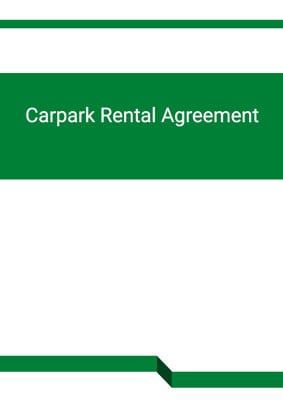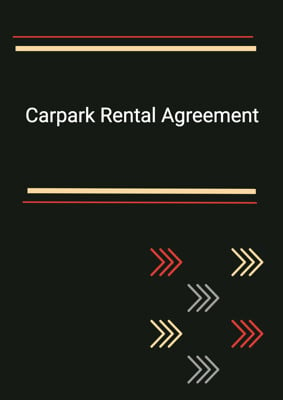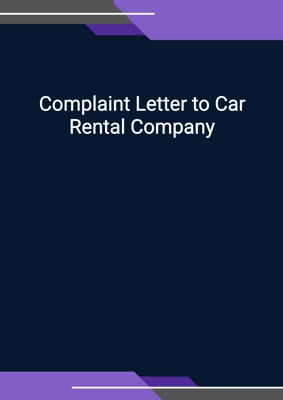How to Tailor the Document for Your Need?
01
Create Document
Fill in the details of the parties. You can click the "Fill with Member’s Information" button to complete it with information saved to your account.
02
Fill Information
Please fill in any additional information by following the step-by-step guide on the left hand side of the preview document and click the "Next" button.
03
Get Document
When you are done, click the "Get Document" button and you can download the document in Word or PDF format.
04
Review Document
Please get all parties to review the document carefully and make any final modifications to ensure that the details are correct before signing the document.
Document Preview
Document Description
The Carpark Rental Agreement is a document that outlines the terms and conditions for renting a carpark space. It is important because it establishes the agreement between the licensor and the licensee, ensuring that both parties understand their rights and responsibilities.
The entire document consists of several sections, each addressing different aspects of the rental agreement. The first section is the introduction, which provides an overview of the agreement and the parties involved. It states that the licensor grants permission to the licensee to occupy the carpark space at the specified premises for a defined term.
The second section focuses on the license fee. It states that the licensee is required to pay the license fee on a periodic basis, which includes fixtures, fittings, equipment, and other items listed in the schedule. The licensee must make the payment in full on the first day of each period, and the license fee cannot be increased during the term of the agreement.
The third section discusses the deposit. It states that the licensee must pay the deposit within one business day after signing the agreement. If the licensee terminates the agreement without any violations, the licensor is not required to return the deposit. However, if there are no breaches and the agreement is not renewed, the licensor must refund the deposit within three days of vacating the premises.
The fourth section covers other charges. It states that the license fee includes the right to occupy the designated space and access it. Additionally, it mentions that management fees, government rates, rent, and property tax related to the space are payable by the licensor. If there are any additional charges, they will be payable by the licensee monthly according to consumption.
The fifth section outlines the licensor's responsibilities. It includes ensuring the legality of the premises and maintaining them in tenantable condition. The licensor is also responsible for keeping the structural parts of the premises and the main drains, pipes, cables, and electrical appliances in proper repair.
The sixth section details the licensee's responsibilities. It states that the licensee must promptly pay the license fee, deposit, and other charges. The space can only be used for carpark purposes, and no alterations can be made without the licensor's permission. The licensee must not remove any fixtures or fittings and must remove all vehicles and belongings upon vacating the space.
The seventh section addresses the termination of the agreement. It states that the licensor can terminate the agreement if the licensee fails to make payments, becomes bankrupt, breaches any provision, or serves a written notice to end the agreement. Upon termination, the licensor can deduct outstanding payments from the deposit and evict the licensee.
The eighth section clarifies that the license is not a lease and cannot be assigned or disposed of. It is a personal right for the licensee to occupy the space.
The ninth section includes miscellaneous provisions, such as the entire agreement between the parties, the validity of the agreement if any provision is void or unenforceable, and the waiver of breaches. It also mentions that the schedule forms an integral part of the agreement.
The tenth section states that the agreement does not confer any rights to third parties.
The eleventh section specifies the governing law and jurisdiction for the agreement. It states that the document is governed by the laws of the jurisdiction state and any disputes should be resolved amicably. Both parties submit to the exclusive jurisdiction of the courts of the jurisdiction state.
The twelfth section provides instructions for notices and service. It states that notices can be served by hand, email, or post, and provides specific rules for each method. It also includes the addresses of the parties for the purpose of serving notices.
The document concludes with the signatures of the authorized representatives of both parties.
How to use this document?
1. Enter the licensor's and licensee's information in the agreement, including their principal place of business. This ensures clear identification of both parties.
2. Specify the license fee and payment terms. Clearly state the agreed price and the dates on which the license fee is due. This ensures that both parties are aware of the financial obligations.
3. Describe the carpark space and its location. Provide detailed information about the designated space and the premises. This helps avoid any misunderstandings about the specific area.
4. Set the duration of the license. Clearly define the term of the license, including the start and end dates. This ensures that both parties are aware of the agreed-upon timeframe.
5. Determine the deposit amount and its refund conditions. Specify the deposit amount and the conditions under which it will be refunded. This helps protect the licensor's interests and provides clarity to the licensee.
6. Clarify the licensor's responsibilities. Clearly state the licensor's obligations, such as maintaining the premises and ensuring their legality. This helps establish the licensor's accountability.
7. Outline the licensee's responsibilities. Clearly state the licensee's obligations, such as prompt payment of fees and proper use of the space. This helps ensure compliance with the agreement.
8. Include provisions for termination. Specify the conditions under which the agreement can be terminated by either party. This helps protect the rights of both parties.
9. Address miscellaneous provisions. Include any additional provisions that are relevant to the agreement, such as the entire agreement clause and the waiver of breaches. This helps cover any specific requirements or circumstances.
10. Follow the applicable laws and jurisdiction. Ensure that the agreement complies with the laws of the jurisdiction state and specify the jurisdiction for any legal disputes.
11. Serve notices properly. Follow the specified rules for serving notices, whether by hand, email, or post. This ensures that important communications are received in a timely manner.
12. Obtain authorized signatures. Ensure that the agreement is signed by the duly authorized representatives of both parties. This validates the agreement and confirms their agreement to its terms.
Not the right document?
Don’t worry, we have thousands of documents for you to choose from:
